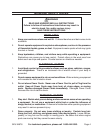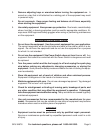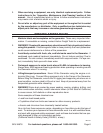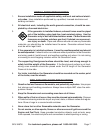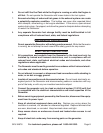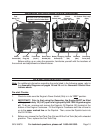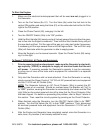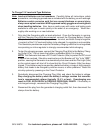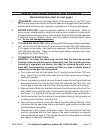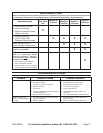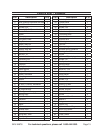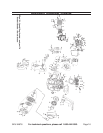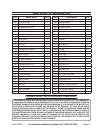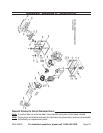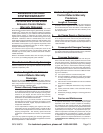
Page 12SKU 94678
For technical questions, please call 1-800-444-3353.
To Charge 12 V Lead-acid Type Batteries:
Note: Lead-acid batteries can be hazardous. Carefully follow all instructions, safety
precautions, and charging procedures as included with the battery you will recharge.
Batteries contain corrosive acid that can cause blindness or severe injury;
always wear splash-resistant ANSI-approved safety goggles and work gloves
when handling batteries. Also, have a nearby area with water and baking soda
available to allow you to wash quickly in the event of an emergency. Wash thor-
oughly after working on or near batteries.
Only start the Generator with no loads attached. Once the Generator is running,
with the Charging Plug (60a) disconnected, connect the Charging Battery Clamps
(60a) to the terminals (red clamp to positive, + terminal, and black clamp to negative,
– terminal) of the 12 V lead-acid battery to be charged if a regulator is not available.
This Generator provides raw output to the battery charging outlet that is not regulated;
incorporating an inline regulator is strongly recommended while charging.
To start the charging process, connect the Charging Plug (60a) to the Battery Charg-
ing Outlet (57a). Do not leave the battery unattended while it is charging.
NOTE: The Generator features a DC Circuit Protector (59a) to protect the DC circuit
in case of an overload. Should an overload occur the Breaker will “trip” to its “OFF”
position, causing the Generator to automatically shut down and the Pilot Light (56a)
on the control panel will shut off to show that the Circuit Protector (59a) has been
tripped. This problem may be caused by a defective battery, a large or high capacity
battery that needs to be charged by another means, or other problems. Reset the
circuitry system by pressing on the Circuit Protector.
Periodically disconnect the Charging Plug (60a) and check the battery’s voltage.
Stop charging the battery when the battery’s voltage reaches the manufac-
turer’s recommended voltage (typically 13.5 V or less). Overcharging can
result in FIRE, EXPLOSION, or SERIOUS PERSONAL INJURY. If the battery is
not charged enough, reconnect the Charging Plug (60a).
Disconnect the plug from the generator’s charging outlet first, then disconnect the
clamps from the battery.
1.
2.
3.
4.



